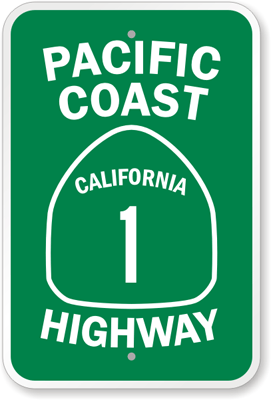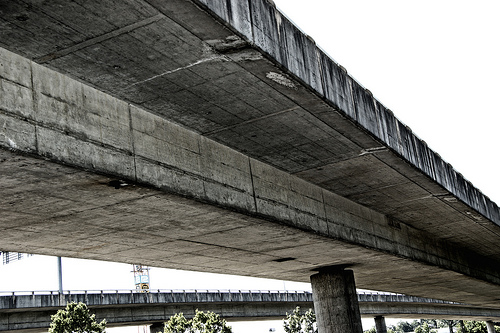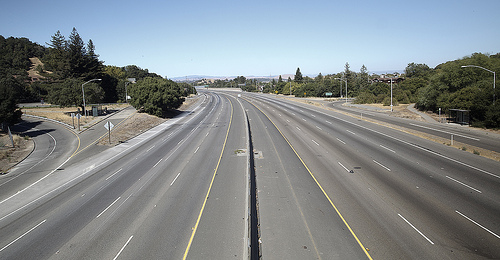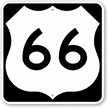Federal gas tax means infrastructure funds running on empty
With the recent talk about who’s responsible for covering the costs of restoring and maintaining America’s crumbling infrastructure, many mistakenly believe that the gas tax, collected via the U.S. Highway Trust Fund, goes a long way towards maintenance and improvement costs for our nation’s highways. Yet upon closer inspection, the numbers point out some potentially surprising facts.

Shortfalls are leaving cash-strapped states increasingly responsible for funding infrastructure repairs. From roadtrafficsigns.com.
First, a reminder of why this is important fodder for discussion: Our country’s infrastructure is deteriorating rapidly. Whether brought on in part by damaging natural causes like Hurricane Katrina’s impact on levees, or seemingly out of nowhere, as in the cases of the collapsed highway bridge in Minneapolis that killed 13 people in 2007, the Seattle-area bridge collapse last month, and near-countless similar incidents, major catastrophes are being caused by bridges, highways and other infrastructure in dangerous disrepair.
In fact, the American Society of Civil Engineers, which says that the country must spend trillions of dollars on repairs and maintenance, awarded America the inauspicious grade “C+” for highway infrastructure. And the impact is widespread: 200 million people each day use urban-area bridges that have either outgrown their intended period of use or have been labeled “structurally deficient” — in other words, infrastructure that’s in dire need of repairs.

Much of America’s infrastructure is paid for by the gas tax, which has stayed steady for years. Now the well is dry. How can we make up the difference? From twicepix.
Highway and infrastructure repair funding as it relates to the gas tax has changed over time. Founded in 1956, the U.S. Highway Trust Fund, which receives the majority of its funds from the federal fuel tax (just over 18 cents per gallon of gasoline; and about 24 cents per gallon of diesel fuel) distributes funds throughout all states, financing roads including the country’s Interstate Highway System. Responsible for almost 80% of federal transportation projects (states cover the rest), the Fund hit hard times in 2008, receiving $34.5 billion from Congress to continue existing projects. (Before the Fund, the U.S. Treasury funded the roads directly.)
Over the following decades, the tax was increased from three cents per gallon to four, then, in 1982, to nine cents. The next big jump occurred in 1990, when President Bush raised it to 14 cents, before President Clinton increased it to the current rate of 18.4 cents in 1993. Yet the Fund is projected to be insolvent this year, and, amid bureaucratic standstills, the U.S Chamber of Commerce has recommended raising the tax in response.
The repairs required to improve and maintain our highway infrastructure are clearly not covered solely by taxes on gasoline. As reported in a UC Davis Institute for Transportation Studies report, “In the US current tax and fee payments to the government by motor-vehicle users fall short of government expenditures related to motor-vehicle use by approximately 20–70 cents per gallon of all motor fuel.” Another estimate places the would-be tax necessary to cover the annual highway budget at $1 per gallon.

One estimate puts the gas tax sufficient to maintain America’s infrastructure at $1 per gallon. From Scottummy.
Negative effect on infrastructure, as seen in bridge collapses and highway deterioration, can’t be prolonged by governmental hand-wringing over the budget shortage. An important chunk of the many-pieced funding puzzle is the driver’s role. A 2009 Streetsblog post continues to resonate today: “If drivers don’t have to pay a fair cost for the use of roads, then highway revenues will be low, roads will be congested, and transit systems will have too little ridership, such that transit systems will be unable to raise fares without losing riders to the already congested roads. This is the low revenue equilibrium, and it’s a bad place to be: inefficient use of all modes, costly road congestion, and a constant shortage of funding for needed infrastructure maintenance and investment.”
Category: Infrastructure, Resources, Trends

















